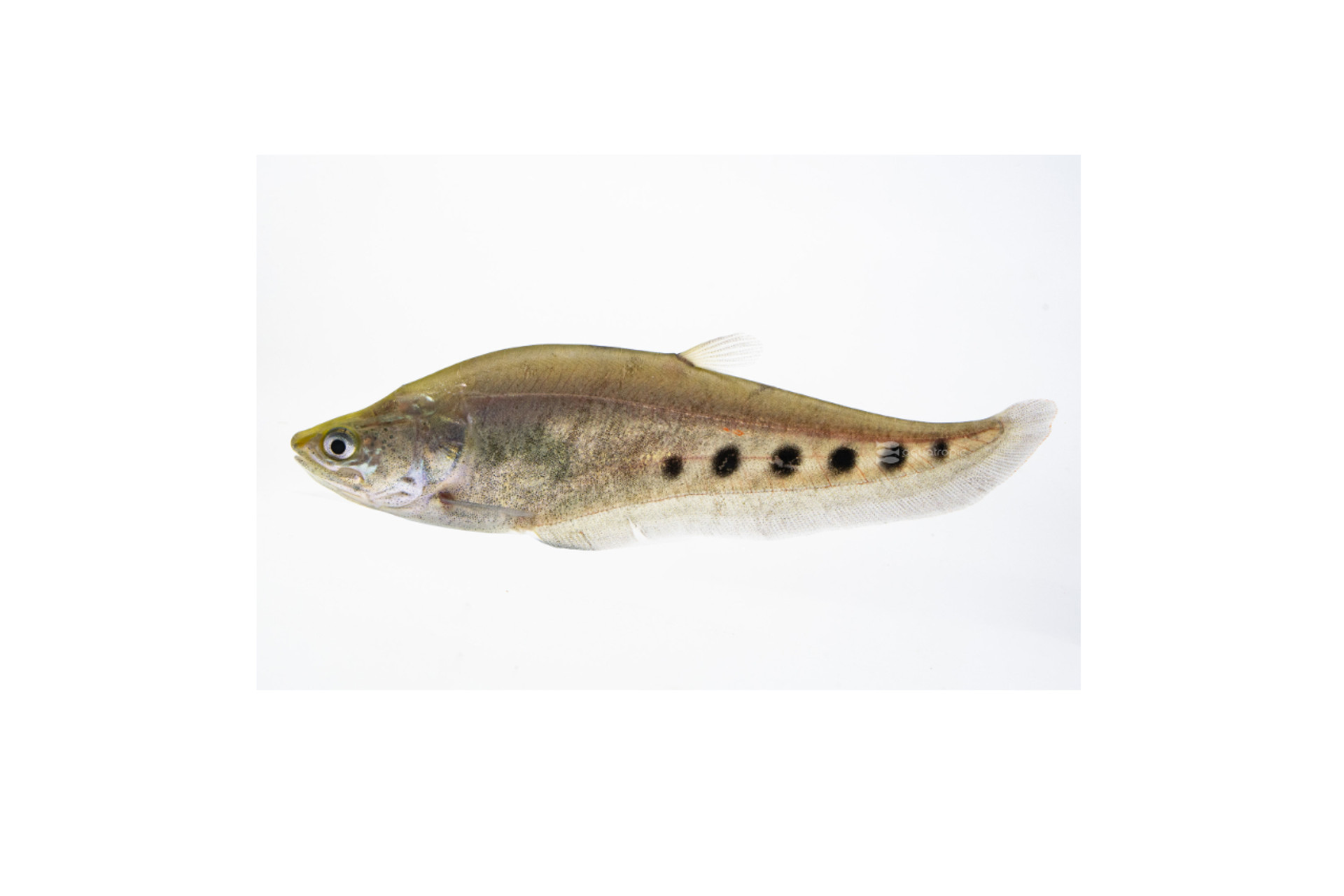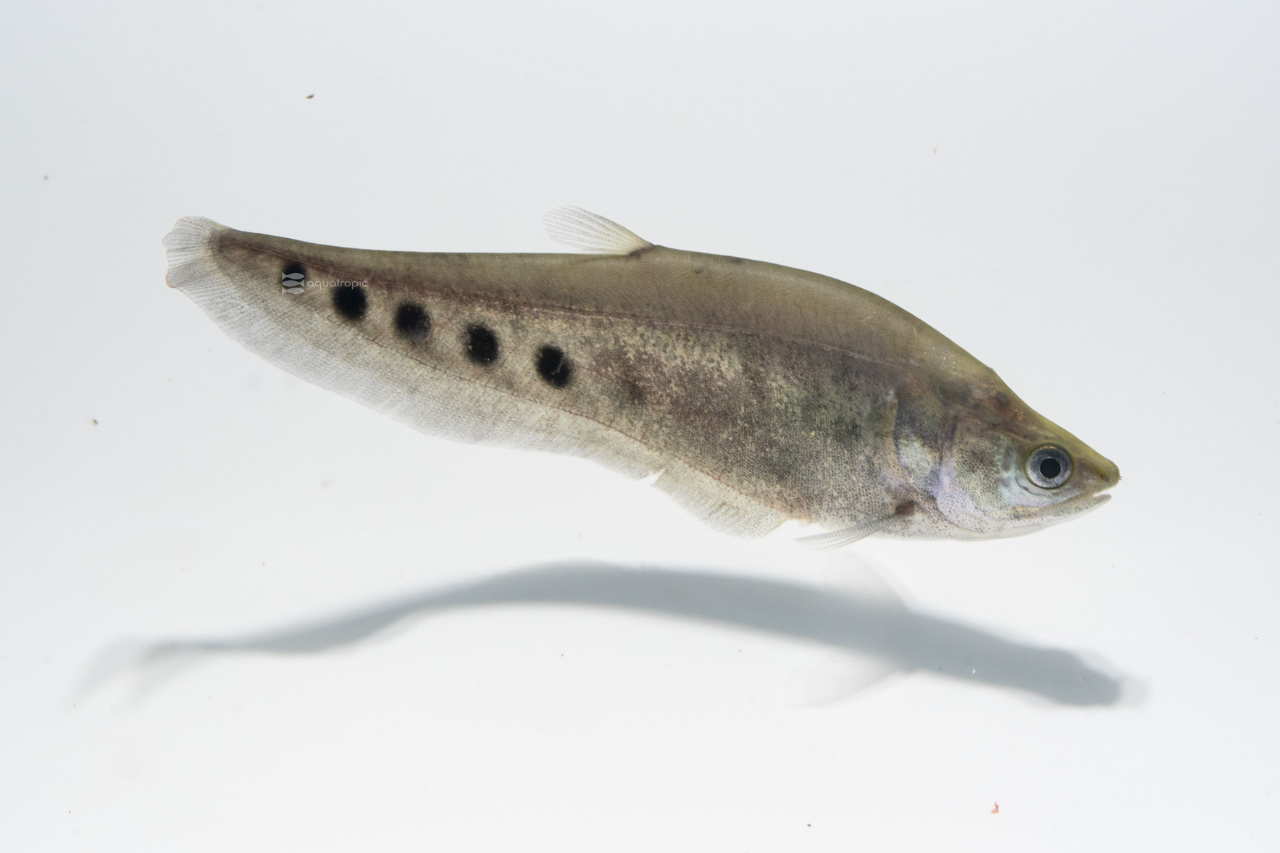Original Oddball - Clown Knife Fish

Quite possibly the OO or Original Oddball fish for freshwater aquarists, the Clown Knife in an amazingly interesting addition to large fish communities. We say “large fish communities” because this species also fits in a secondary category of fish, those commonly called monsters. While they don't get quite big enough for a famous, adventuring British biologist and angler to hunt on his TV show, they can achieve sizes appropriate for the largest home aquariums, ponds and public displays!

Clown Knifefish goes by the scientific name Chitala ornata. “Chitala” is a Bangla word for fish, while “ornata” is derived from Latin and basically means “ornate,” or “decorated,” a reference to the prominent spots visible along the lower back half of its body. These spots also play into all of this fish's common names, whether it's called Clown Knife, or Clown Featherback, or the much less common Spotted Knife. Their extended back half is dominated by an extended lower fin (anal fin for those of you who are... particular) which connects to their tail (or caudal) fin. The top half of this region is made up of one long dorsal fin, which nearly connects to the other. These together have the look of a knife blade or feather and thus the common names.
This unique fin arrangement allows them to move both forwards and in reverse, giving even large fish a way in and out of caves too small to allow them to turn around otherwise. In addition, it makes for a very interesting and eerily graceful locomotion style in the aquarium.
They are a very common fish in the large river systems of the Malay peninsula, most often found in the Mekong, Mae Klong and Chao Phraya basins. Their popularity as a food fish and a sport fish has led to them being introduced to many other environments across south Asia, where they often thrive as invasive species. An introduced population of them also exists in some of the canal systems of south Florida, where their popularity as sport fish has risen in recent years. They are Potamodromous, meaning they migrate, though only in freshwater, moving out of their river homes into lakes and floodplains during high water for the breeding season.
As referenced, Chitala ornata can get very large, the largest fish on record was caught in 2012 on rod and reel, hitting 43 inches long and weighing over 24 pounds! A much more common adult size is less than half that length (nearly all of them you'll see in fish markets). This being said, an 18–24-inch fish is still a monster in an aquarium, and at grow out, a proper home for most home aquarists will likely be their pond. These fish will grow relatively quickly up to a foot and a half long, where their growth rate tapers off somewhat.
The Clown Knife can adapt to a wide range of water quality parameters, being totally unbothered by the full range of hardness values you'll see in north America. They are likewise okay in a wide range of pH, being just fine anywhere from 6.0 to 8.0. They are a tropical fish and should be kept in water that is between 72- and 78-degrees Fahrenheit, and they also prefer well oxygenated water, so we suggest keeping their displays on the lower end of this spectrum. Large regular water changes will also help keep the water clean and the O2 levels high. They are nocturnal fish in the wild and will prefer tanks that are dimly lit or offer abundant cover in the way of driftwood and floating vegetation or all of the above!
The Clown Knife is a peaceful fish with a couple caveats. They can be intolerant of others of their species and genus, especially in cramped conditions. The other caveat is that their wild diet is mostly other fish (with some inverts sprinkled in), and so if you have anything in their display that the Clown Knife can eat, it will. Other than that, it can be kept peacefully with any variety of other large fish, they are popular additions to displays with Pacus, freshwater rays, Oscars, Peacock Bass and large fish.
Feeding knife fish is usually pretty easy and most individuals will greedily accept a variety of thawed meaty foods like Gamma Foods chopped prawn, and mussels. Foods like clams and live earthworms etc. are also usually happily taken down. Larger specimens will relish night crawlers and market fish and shrimp. We have found that nearly all of them will accept a large sinking pellet without much training, though we always suggest continuing feeding them thawed foods. For the rare picky fish, they can always be fed feeder fish like guppies and goldfish, but we always recommend that you either raise these yourself or get them from a trustworthy source like a quality local fish store where you know you won't be introducing disease, and your feeders can be fed a fortifying diet. While generally nocturnal, they easily learn daytime feeding patterns, and will become more active during lights-on over time.
There are not that many fish that are as cool as the Clown Knife Fish; few things in any aquarium, freshwater or salt will generate as much commentary as their undulating swimming style. They are hardy and peaceful, and relatively easy to keep, as long as you have appropriately sized displays for them. If you have a large display, and are looking for the ultimate in showpiece fish, then Chitala ornata should at least be on your list. Ask your Local Fish Store about getting you one today!